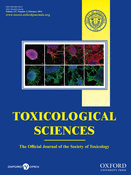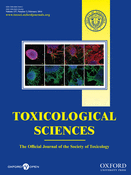
Cover image

Volume 137, Issue 2, February 2014
FORUM
FutureTox: Building the Road for 21st Century Toxicology and Risk Assessment Practices
BIOMARKERS OF TOXICITY
Early Prediction of Polymyxin-Induced Nephrotoxicity With Next-Generation Urinary Kidney Injury Biomarkers
ENVIRONMENTAL TOXICOLOGY
Flame Retardant BDE-47 Effectively Activates Nuclear Receptor CAR in Human Primary Hepatocytes
NF-κB Signaling Is Increased in HD3 Cells Following Exposure to 1,4-Benzoquinone: Role of Reactive Oxygen Species and p38-MAPK
IMMUNOTOXICOLOGY
Transmaternal Bisphenol A Exposure Accelerates Diabetes Type 1 Development in NOD Mice
Differential Consequences of Two Distinct AhR Ligands on Innate and Adaptive Immune Responses to Influenza A Virus
Editor’s Highlight: The aryl hydrocarbon receptor (AhR) holds a high place in the annals of toxicology, but its function still eludes us. In the paper by Wheeler and coworkers (137, 324–334), the authors explore the role of AhR activation on immune system regulation. Specifically, the group treated animals with the synthetic TCDD (a.k.a. dioxin) or the naturally-derived FICZ (photooxidation product of tryptophan) and tested the response to the common respiratory virus, influenza A. One might expect that AhR activation, regardless of the ligand, would lead to similar immunomodulatory response, but this was not the case. In initial studies TCDD altered a range of host immune responses, but FICZ was without effect. After duration of receptor activation was controlled for, there was still a divergent response suggesting that other mechanisms, such as the type of cells in which the receptor is activated, may be involved. Gary W. Miller


